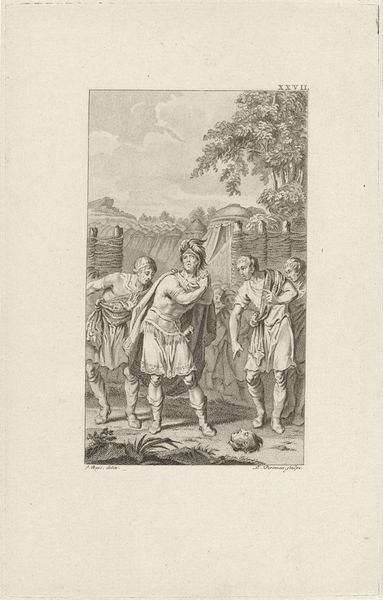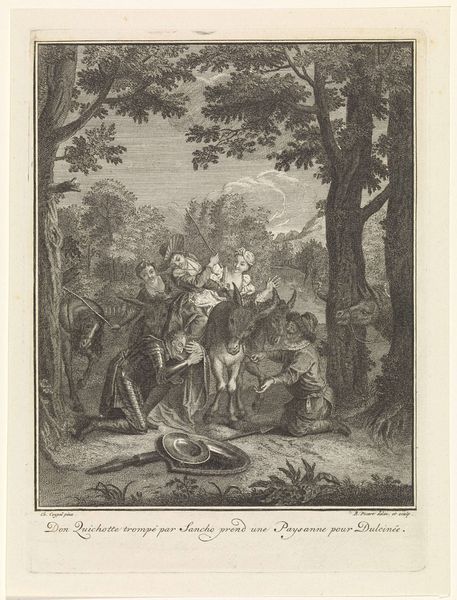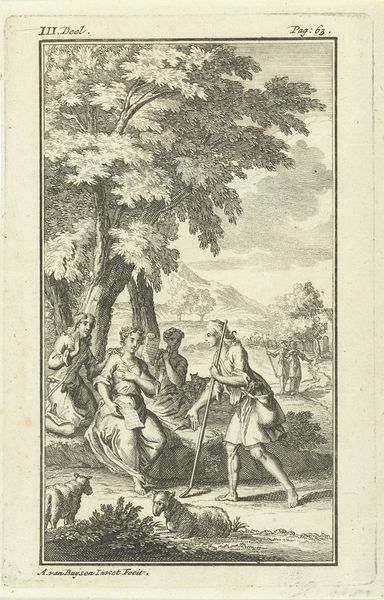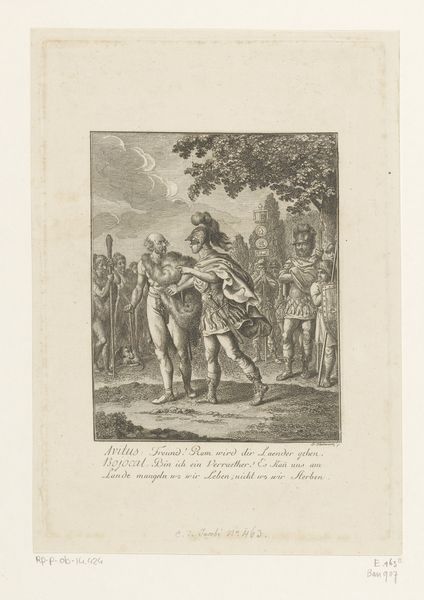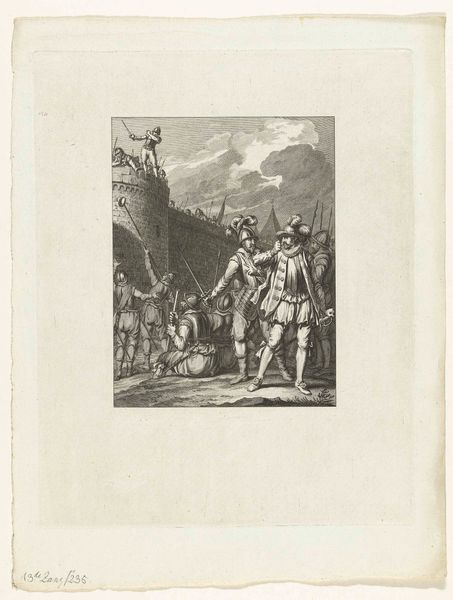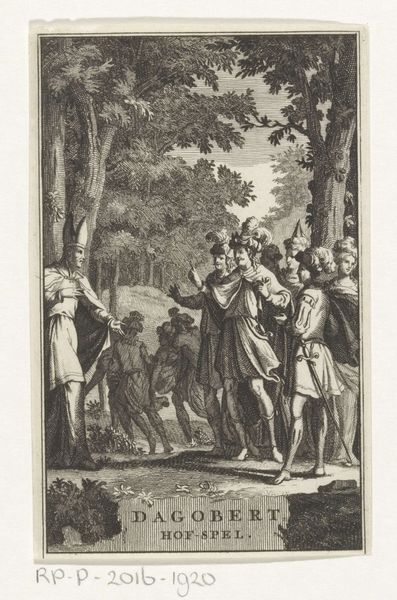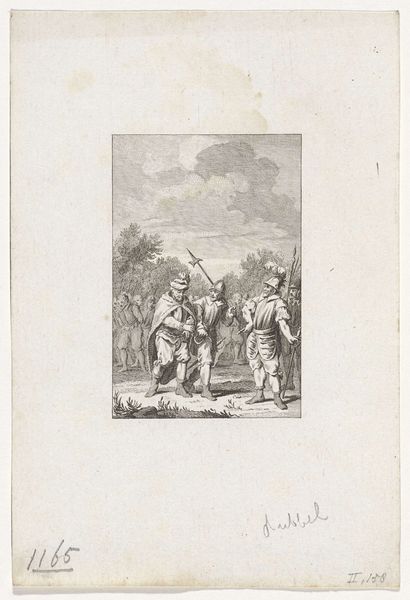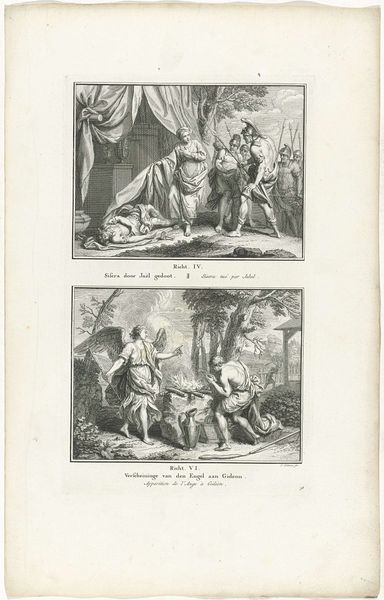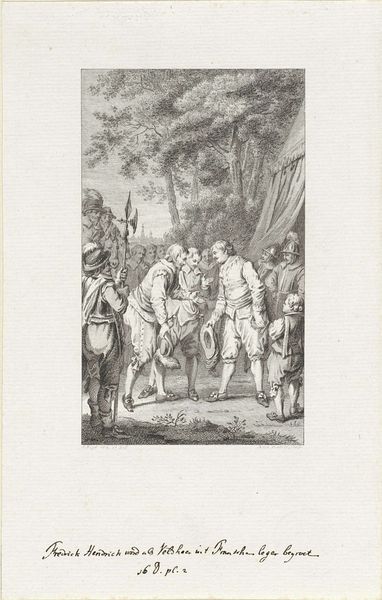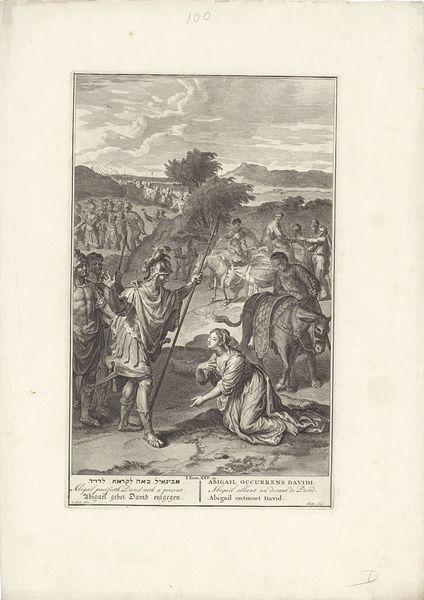
engraving
#
neoclacissism
#
aged paper
#
old engraving style
#
figuration
#
line
#
history-painting
#
engraving
Dimensions: height 215 mm, width 146 mm
Copyright: Rijks Museum: Open Domain
Editor: Here we have Reinier Vinkeles's "Moord op de Germaanse veldheer Arminius, 19," created in 1786. It's an engraving, and the scene is undeniably violent. The figures are positioned quite dramatically, creating a real sense of chaotic movement despite being static. What elements of the composition stand out to you? Curator: The power in this engraving stems from Vinkeles's astute manipulation of line and form. Note the convergence of the swords, all pointed at Arminius's core, creating a visually dense focal point. This directs the eye and intensifies the violence. It is the formal arrangement of these lines and shapes that dictates the narrative's intensity. How do you perceive the distribution of light and shadow? Editor: I notice how the lighter tones are concentrated on Arminius and his immediate assailants. This draws attention to them, almost isolating them within the darker background. It's a stark contrast. Curator: Precisely. This careful use of chiaroscuro elevates the central drama. Light serves not merely to illuminate but to sculpt form, giving the figures volume and emphasizing the brutality of the act. Furthermore, the textured background adds depth. Observe how it functions as more than just setting: it visually encroaches upon the foreground, contributing to the oppressive atmosphere. The tree branches almost clawing inwards... What semiotic value could we assign to this? Editor: I hadn’t considered that! It gives me a better understanding of how line and shading contribute to the dramatic tension. The composition focuses on the figures while setting an appropriately dramatic mood with dark tones. I learned to consider even small shapes, tones, and lines within the image more thoughtfully. Curator: Indeed. Focusing on the intrinsic visual language allows us a more nuanced reading, disentangling narrative from the very mechanics of representation. I, myself, found renewed appreciation for how the deliberate structure mirrors and amplifies the story's core conflict.
Comments
No comments
Be the first to comment and join the conversation on the ultimate creative platform.
